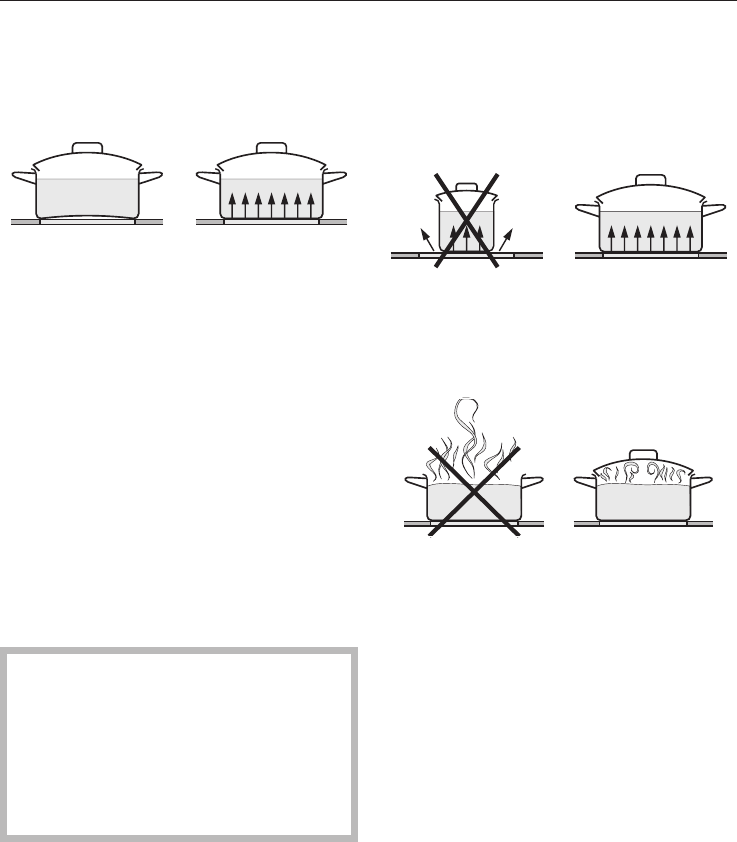
–
Use cookware with thick, flat, smooth
bottoms. Slightly concave bottoms
will also work adequately. Pans with
convex bottoms will not cook well.
cold hot
–
Cast iron, glass or stoneware should
not be used because they have poor
heat transfer and may scratch the
cooktop surface.
– Also unsuitable is plastic or
aluminum foil cookware. These melt
at high temperatures.
– Copper bottom and aluminum
pans may leave a residue on the
cooktop in the form of metallic lines.
This is normal. These lines can be
removed using a non-abrasive
ceramic cooktop cleaner or a
shielded scraper blade.
Be sure to clean the cooktop after
each use. Each time this residue is
allowed to melt it becomes harder to
remove and may mar the
appearance of the cooktop.
Let the cooktop cool before
cleaning.
–
Use only pots and pans with flat
bases. Sharp pot and pan bases
scratch the ceramic glass surface.
–
Lift the cookware when moving it. In
this way you will avoid streaking from
friction and scratching.
Energy saving tips
–
For the most even and energy
efficient cooking, the diameter of the
pots/pans should match the diameter
of the burners as closely as possible.
too small fits
–
Whenever possible, keep pots and
pans closed while cooking. This
helps keep in the most possible heat.
open closed
– Use a small pot for small amounts. A
small pot on a small burner needs
less energy then a larger partly filled
pot on a large burner.
–
Use little water when cooking and
take care to select a lower energy
level as soon as cooking is
completed.
–
For longer cooking periods, you can
switch off the cooking zone 5 to 10
minutes before the total cooking time
is completed. The residual heat will
continue to cook the food.
Selecting cookware
15


















